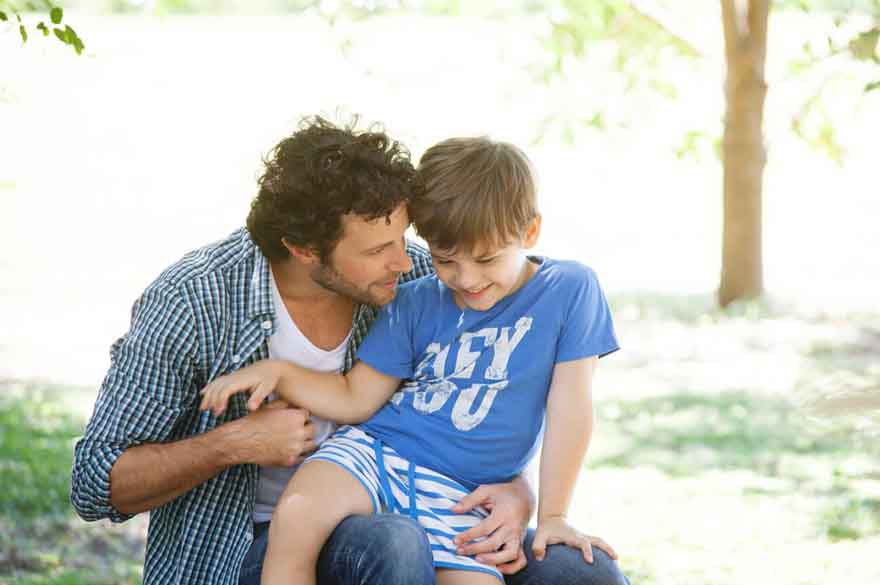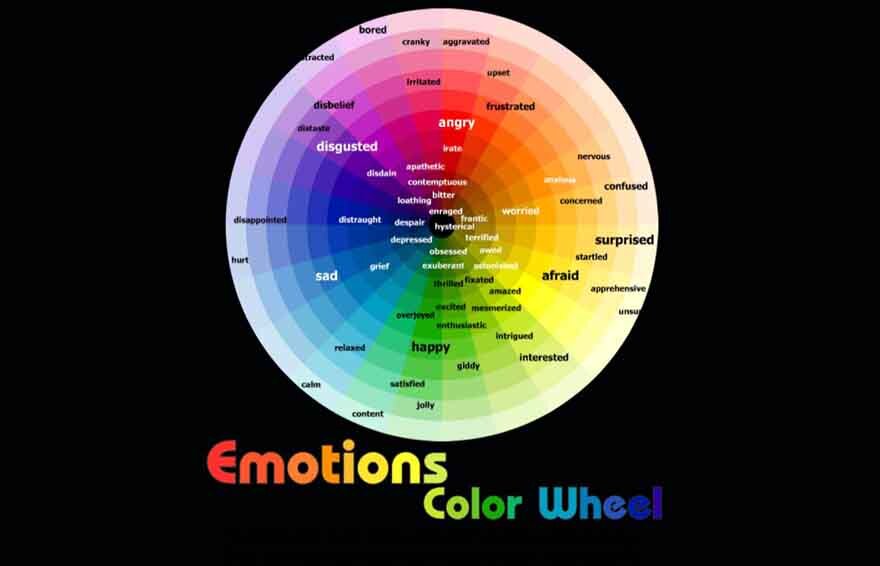When kids are young, it’s hard for them to find the right words to express how they’re feeling. At times, it can even be hard for them to know what they feel, especially when they begin to meld together and a level of intensity to each situation is implied.
There are times where parents have a hard time understanding the emotions of their children, and even more so with children. The younger ones especially have a difficult time understanding the feelings of their siblings and parents. That’s why many child psychologists are recommending the use of an emotion wheel, or feelings wheel as some parents call it. These are ways to have an easier time navigating the emotions and state of your children, and let’s face it, kids can be an enigma sometimes. So if you think you would benefit by having this type of tool around, I’ll give you the details on what an emotion wheel is and how to use it.
Click here to view the emotions color wheel.
What is an Emotion Wheel?
An emotion wheel, or feelings wheel, is a color wheel with the various emotions represented by different colors. Think of it as a map to your child’s emotions. You bring it out and simply ask the child, “How are you feeling right now?” You wait for them to respond accordingly by pointing to how they feel, and then you have a conversation based on that. This is not only a good way to gauge your child’s status, but also having them learn more about themselves and their identities. It works best with young children, especially those unable to properly express themselves through words.
Emotion wheels are also good for older children, though it’s best used when integrating it during the younger years and keeping it practice of the wheel growing as they age. You might find resistance when introducing the wheel to, say, a fourteen year old. If you are able to use it with an older child, however, it allows you a way to better start difficult conversations. In essence, this is not only a tool to help the child, but to help you as well. Learning just what your child needs is vital, and so is your child understanding how it affects their parents in return. It allows for easier communication, and it also helps them learn empathy.
While this is a very helpful tool for young children, it can also be helpful for adults who have difficult times with self reflection. Whether or not you want to continue this practice as the child gets older, or if you even want to integrate it with older children at all, is completely up to you.
Types of Emotion Wheels

There are quite a few you can find online. For young kids, I would suggest using a basic emotion wheel with the essentials: happiness, fear, sadness, anger, disgust, and surprise. These are the core emotions a child feels and are all easy for children to identify, and I also suggest you use a few extra cents to print the wheel out in color. Using colors helps the child better identify what they’re feeling, and also makes it more appealing, especially for the very young ones. How are they feeling? They’re feeling red, which is anger. Or they’re feeling blue, which correlates to being sad. Most of all, it allows the kids to pin how they feel without having to read everything.
For older kids, I suggest pulling out a more complex wheel, adding more specific emotions like being confused, upset, or content. In a different style, you have basic emotions, but the wheel should also be made a gradient, where more intense feelings are nearer to the center. If your child is just a little frustrated, they should point near towards the edge of the circle. If they’re downright enraged, though, that would be closer to the center. On a small joking note, it’s also a great way to find out if your child is colorblind.
Scenarios to Use the Emotion Wheel For Kids

So we have the gist of it, but when’s the best to bust it out? Understandably, you can’t bring it around everywhere, and it should be used as a tool to help build a connection for parents to understand their children and for the children to better understand themselves. I say use it sparingly, but don’t bust it out so rarely that it makes things awkward and difficult at the moment. Here are some different scenarios in which to use a color wheel.
After School
This is a fantastic way to integrate the wheel into everyday life without making it too redundant. It’s fairly simple. When your kid gets home, ask them to point to the color wheel to sum up how they feel after the day has ended. This allows the child to reflect and think back on their day, and it gives an opportunity to confront problems without the child being too ashamed or afraid to bring it up. If they pick an emotion like sad or angry, it’s a gateway into figuring out just what the problem is.
If You’re Child Is Noticeably Moody
We’ve all seen it. Something happens at school or between siblings when the parents aren’t around, and because of that, the kid is upset and won’t say why. Using the emotion wheel is a silent but direct confrontation that has them expressing how they feel in that present moment. Even if you don’t get a direct answer as to what the problem is, being able to know how they feel on a base level is already a fantastic start.
This is also brilliant during the later years, when your child becomes rather unsure of what they’re feeling or how to express them. If you get the “it’s nothing” excuse when asking them what’s wrong, pull out the emotion wheel. Have them choose how they’re feeling. It helps them figure out their own emotions, but also subtly forces them to tell you what they’re experiencing in the moment. If it’s pushed away or the child is clearly frustrated by you bringing it out, you may have a legitimate problem on your hands. In that case, put aside the emotion wheel and give them some space until you’re able to gauge for yourself what to do next.
During Difficult Conversations
As much as we would like to protect our kids from trauma and give them only good experiences, there will be times when you need to confront them with a difficult conversation. Perhaps a family member died, or a pet has passed away. Maybe their best friend is moving to another city, or perhaps their parents are going to be separating. In these cases, the wheel of emotions for kids is your best friend. This is what will make conversations a lot easier because you and your child will be able to navigate one another’s states more smoothly.
Things won’t go perfectly. Nothing ever does with these types of conversations. Hopefully you will know your child well enough to mitigate the emotional backlash, but even then, these types of talks are difficult for a reason.
For Children with Special Needs
While the wheel of emotions is meant for all children, this beauty is especially helpful for children who have special needs. Kids who have neurodevelopmental issues can use an emotion wheel for an easier time communicating to their parents, as well as figuring out what they themselves are thinking and feeling. In these cases, I also suggest the parents frequently use the emotion wheel themselves, as it allows children to connect the feelings of their parents.
All children, especially the youngest ones, tend to have trouble realizing that they and their parents feel the same things. By parents using the color wheel as well, it allows children to understand what their parents are feeling as well, leading to a better connection. Children with autism or other conditions that make socializing difficult will most definitely benefit from this, as it allows them to understand how they themselves make their parents feel, and allow you to avoid doing what not to do with an autistic child.
During an Argument
This one is tricky depending on who is having the argument. This works best when it’s between siblings, cousins, or friends. It’s an easy way to break up the fight and also have them talk it out. Each child is able to express their feelings through the wheel and can be given the floor to express why they’re hurt or what they’re trying to convey.
This is a bit harder when the one having the argument with the child is you or your partner. In that case, it may be a bit harder to have the patience to pull out the color wheel since you’re the one that’s heated. I mean no offense, of course, but many parents find it faster just to shut down their child’s argument straight up instead of having a conversation.







